My adventures in the Kombucha Dimension
Recently I decided to take a stroll into the mystical realms of the DIY Kombucha type. Once your kombucha production gets rolling you'll wonder why you ever had a bottle of store bought liquid-garbage overpriced kombucha anyways. Just kidding, some store bought is pretty alright. It's actually pretty amazing how they can get the consistency so bang-on every time. Maybe it's still early days for me and I'm still working out the finer brewmaster techniques. I've had some batches taste better than others. There are many factors that can come into play when brewing anything. Overall, it's a simple and straightforward process but there is a lot of room for variation when it comes to customizing your brew. But of course certain things must be kept in mind which we'll get into.
There are two phases to making Kombucha, the first is the so called primary fermentation where most of the magic happens. After this primary fermentation of a week or two, depending on factors we will cover soon, am optional second ferment can be done. This secondary fermentation adds carbonation as well as imparts added flavour if desired. Kombucha is a fermented tea-drink and the magic happens because of something called a SCOBY.
SCOBY: Symbiotic Culture Of Bacteria & Yeast. The SCOBY is a wondrous miracle, whose mysteries are many and great. It resembles an alien lifeform, and appropriately will self replicate itself into another SCOBY given the opportunity(during brewing) which can be then used to brew even more kombucha. If you have a friend brewing kombucha, getting a scoby from them should be pretty trivial since it's quite an 'abundant' process. If you're alone in that respect, search online or in health food stores, you might be able to find a 'kit' which is usually nothing more than just a SCOBY floating around in some essential "starter tea" as it's called. The SCOBY and the vinegary smelling starter tea is what you add to your tea solution to make the magic happen. SCOBYS are also self-sustaining, meaning that if you are not brewing you can keep them in a "SCOBY Hotel" and they will just 'chill' until it's time to brew again, apparently being able to survive quite long periods like 1-2 years stored properly.
What you gon’ need, partner
The tea most often used for brewing is Black Tea. I have been brewing my kombucha using Yerba Mate. I think green tea works as well. I would do some research if trying to use a different tea. For example, I know that Earl Grey is black tea, but with some added essential oils, which interfere with the fermentation. Don't do that.
Aside from the SCOBY, here is the other items you'll need:
- Sugar: white or cane works best, 1 cup / 4l
- Tea, most often black tea, I use 1 cup yerba per 4l water but was told 10g of black tea or like 10 tea bags.
- Filtered water
- Something to steep the tea in (I used a teapot and french press but it would probably make more sense just to use an actual cooking pot to brew 4l of tea at once.)
- Brewing vessel big enough to hold the brew, most suitably glass. See notes below.
- A clean, freshly laundered cloth to cover the vessel during brewing
Temperature is one, if not the most important factor in determining a successful brew. Assuming your SCOBY and sweet tea solution and proper cleaning procedures are in order. Your brewing environment should be about 23ºC -- 27.5ºC and free of drafts. If your temperature is too low, you can run into issues with mold. I think if it gets brewing too hot it starts to become more alcoholic -- it is important to note that kombucha will contain some alcohol. You'd have to measure but I heard this can be anywhere from 0.5% -- 4-5%. I guess to be sold in stores, it can't be more than 0.5% and home-brewed often contains higher because home brew people aren't really 'controlling' for that sort of thing like a commercial brewer would be. But the real benefit of kombucha is the many enzymes produced during the fermentation process.
Your first brew is the most critical and the place where things are most likely to go wrong if they are for some reason going to head that way. Admittedly, the 'baby' SCOBY that starts forming on top of your kombucha brew does admittedly look a bit questionable... Starting as a white film on the surface... Eventually this film starts to thicken and 'gelatinize' as your SCOBY 'increases it's power level.' But if you notice any sort of blues, greens etc., you most likely have a mold problem. Mold generally is coloured green/blue etc and should be out of place and easy to spot if it's happening. If the environment is below 23ºC you are inviting mold growth and a long, drawn out brew time. Initially the kombucha brewing process is aerobic, but once the SCOBY caps off the top, the rest of the process is done anaerobically. Over time if your SCOBY will become so big you will have to remove it, you can use a ceramic knife to cut it and give it to a friend for them to start their kombucha odyssey.
Before brewing, make sure that your brewing vessel, utensils, preparation environment is totally clean. It is recommended to mist the brewing vessel, tea pot and utensils it down with 3% food grade hydrogen peroxide or distilled vinegar and rinse with water. I just use soap and water and diligence and been seemingly okay. Once your brewing process is well underway, the pH level of the brew drops to a point where it becomes quite inhospitable for foreign invaders such as competing bacteria or mold. However during the initial stages, you want to give your brew as much of a head start as possible by making sure everything is as clean as possible during the preparation.
Keep it calm
As far as a place for your brewing, of course you need to keep in mind temperature but also, put it somewhere where it won't be getting disturbed. Avoid microwaves, televisions, washing machines etc. Let it sit undisturbed as much as possible. You will notice a mild vinegary smell during the brewing.
You can brew small batches or large batches. Usually people that brew tend to go for more, since you're already doing the work you may as well make more. But I think with smaller batches, your brewing time might also be reduced so there is that to consider too. I have been brewing approximately 4L batches, and I am using about 1 cup of Yerba Mate and slightly over 1 cup of sugar, maybe like 1 1/8 cups sugar per 4L tea. Don't go for anything too fancy with the sugar. Plain white or cane sugar is the best, don't use honey for sure because I think it has antibacterial properties. Most of the sugar gets consumed in the brewing process, apparently so does much of the caffeine content from the tea. Thoroughly stir the sugar in and make sure it's all dissolved. Also don't add the SCOBY to hot tea, you don't want to destroy the bacteria. Room temperature is fine. The longer it brews for, the less sweet and more 'vinegary' the kombucha becomes and this is a matter of personal preference. Once your brew is all set, cover it up with a clean cloth and secure it to the container, I just used an elastic and leave it in your brewing spot for a week or two.
Notes on your brewing vessel and spigot
Try and get a glass container if possible. If equipped with a spigot, make sure that it's a decent quality one. Spigots aren't necessary but make bottling a breeze. However, since kombucha is acidic you want to avoid questionable materials like that fake plastic "chrome" which invariably ends up chipping off. I started brewing and found out about this swapped mine out as soon as possible. I think the clear plastic spigot pictured below would have been a safer choice than the "chrome" but the lever broke so I went hunting for other ones. Plenty were found online but I found some at a local "u-brew" wine/beer supply shop. If you are using stainless steel, make sure it's a high-quality grade of stainless since acidic foods and stainless steel can be a bad combination. The replacement spigots I found were slightly too big to fit in the existing hole, which I ended up enlarging slightly. I didn't feel like ordering some online and waiting. A rotary tool and diamond bit along with being highly methodical about getting that glass dust washed out after got the job done. I ended up making two of these brewing vessels to increase the maximum kombucha overdrive allowable(at this point in time.)
The fermentation situation
The secondary fermentation can be used to add carbonation if you wanna fizz up your drink as well as adding flavouring ingredients if desired. Transfer the kombucha to a bottle with a tight fitting lid, add in your flavouring ingredient and leave it for another week or so. You don't have to do the secondary fermentation but it is another whole dimension in the kombucha realm certainly worth exploring with lots of mind blowing flavour possibilities. I have been doing Hibiscus and it's been amazing so far and the colour comes out really nice too. Another 'typical' choice is ginger but I haven't done that one myself yet. Or even just doing plain. You may notice stuff growing in there during the second fermentation which will be normal and a sign of a healthy culture. The secondary fermentation will add another week if you want to proceed with it but it's well worth it. Eventually, put your brew in the fridge. Enjoy.
All in all, I’m pretty happy with my adventures so far, maybe you’ll one day decide to embark on the path if you haven’t already. And if you have, perhaps you’ll share some tips because I’m sure I could still use a few pointers. 🧐🤓
.gif)


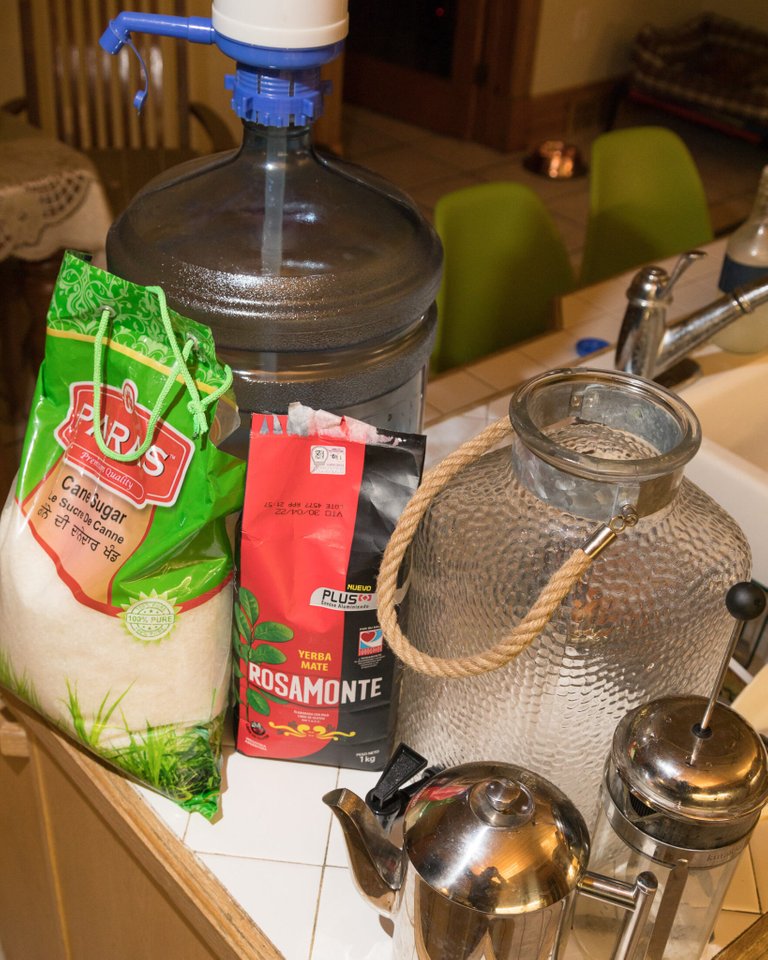
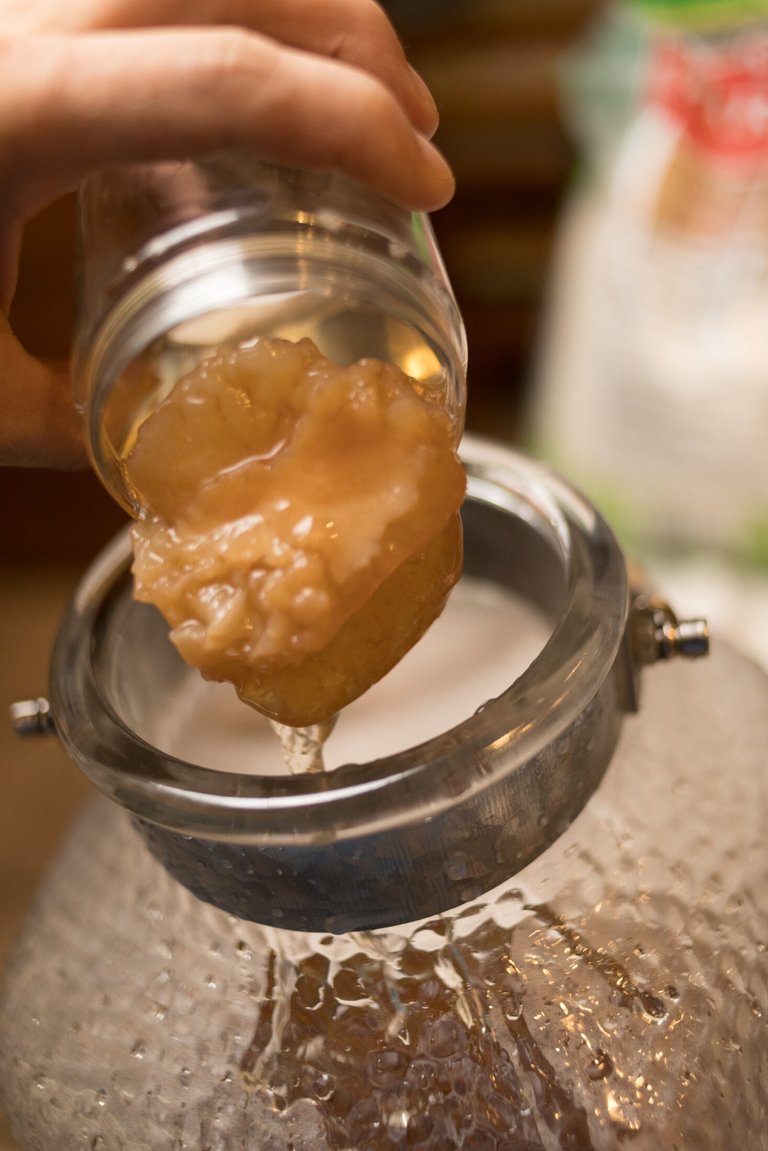
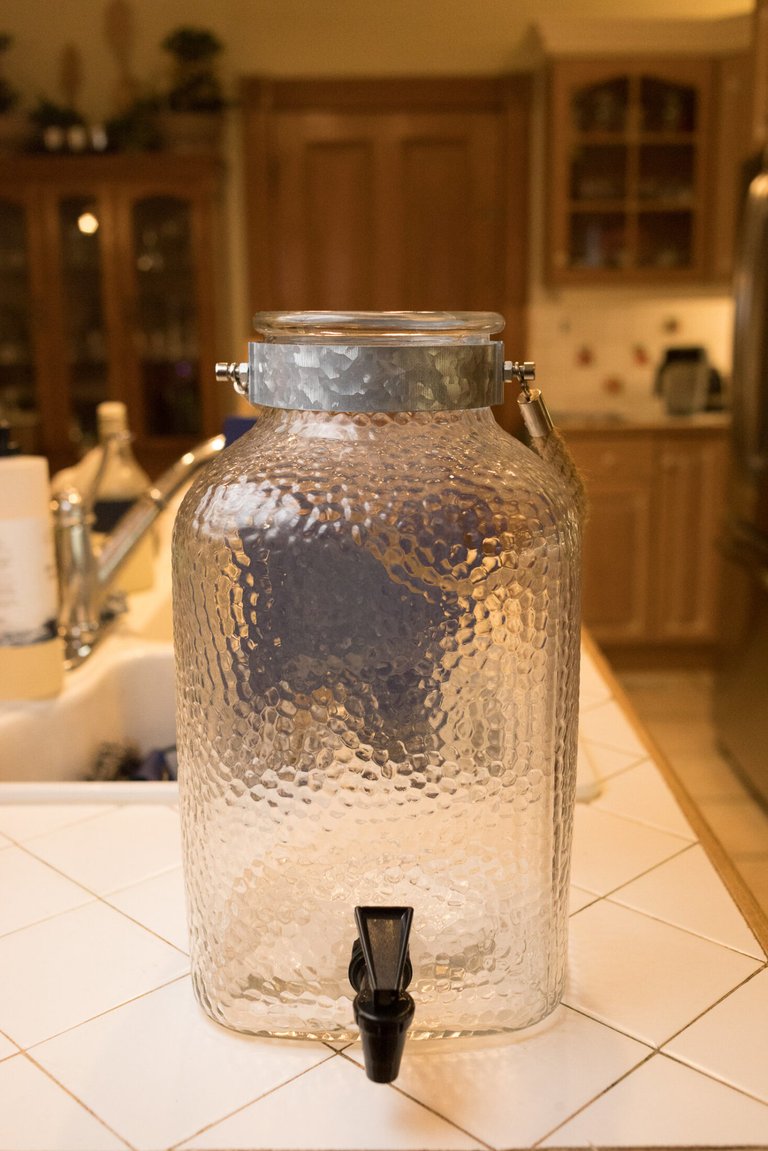
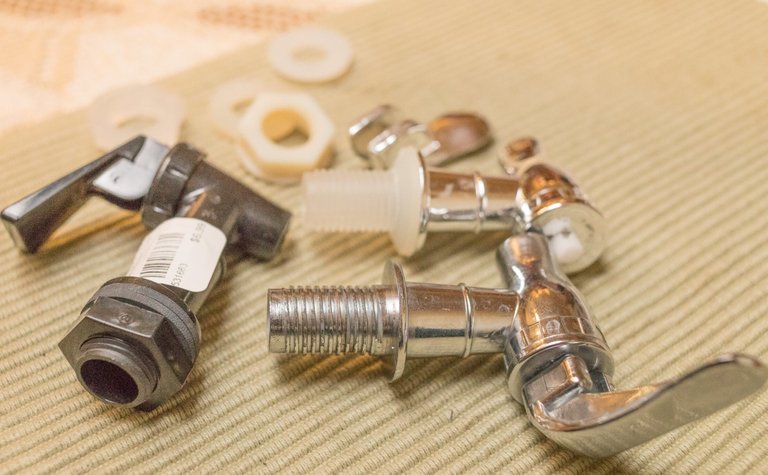
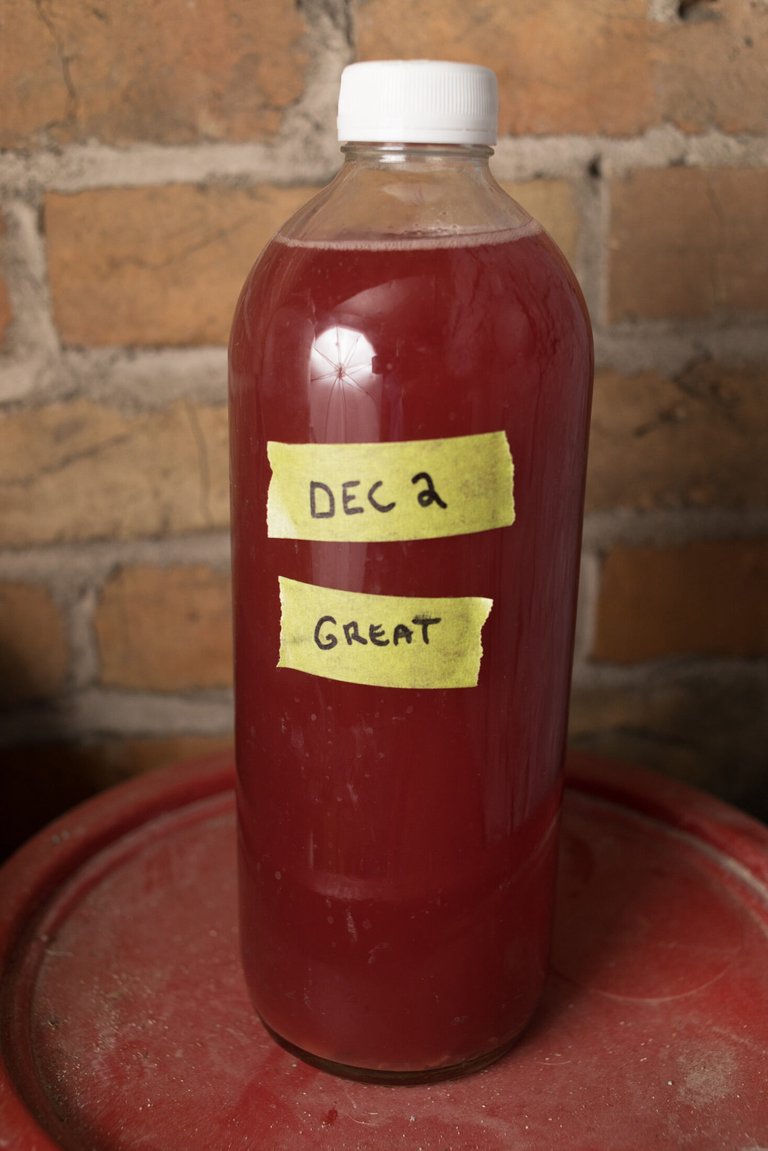
Congratulations @synrg! You have completed the following achievement on the Hive blockchain and have been rewarded with new badge(s) :
You can view your badges on your board and compare yourself to others in the Ranking
If you no longer want to receive notifications, reply to this comment with the word
STOPDo not miss the last post from @hivebuzz:
Hi synrg,
Visit curiehive.com or join the Curie Discord community to learn more.
Such a wonderful tutorial. We all really need to be focusing more on our gut health at the moment and Kombucha is definitely one of the best ways to do so. I haven't made any in years, more recently getting involved in making water kefir, but this got me excited to try it again, now to find me a scoby xxx
Curated for #naturalmedicine by @trucklife-family.
Did you know that you can earn a badge from @hivebuzz for posting about #mentalhealthawareness? Read more details here!
We encourage content about health & wellness - body, mind, soul and earth. We are an inclusive community with two basic rules: Proof of Heart (kindness prevails) & Proof of Brain (original content). Read more here.
Our website also rewards with its own Lotus token & we'd love you to join our community in Discord. Delegate to @naturalmedicine & be supported with upvotes, reblog, tips, writing inspiration challenges for a chance to win HIVE and more. Click here to join the #naturalmedicine curation trail!
We also encourage you to follow our sister accounts, @lotusshares and @uplotus for announcements and reblogs.
Thanks so much @naturalmedicine and @trucklife-family! I really appreciate the support, and since I seem to be having issues with the kobucha, maybe I'll have to try the kefir ;) I can't be 100% sure what's going wrong but I seem to be having an infestation of 'kahms yeast' and while I slightly suspected something wasn't completely right with my scoby, it became more than apparent with the last brew! Alas I do think it's most likely the tea, if I can't figure it out I'll have to hammer out another post and get some help from y'all!!! 😂
I love brewing my own too! My scobies come from a mother first brewed by my aunt over 20 years ago! I don’t drink it during winter but I do keep my scobies growing in a scoby hotel in my pantry 🥰
Thanks for stopping by, that's the sort of thing that gets my hyped about kombucha. What's hilarious though is I finally figured out my 'scoby' wasn't even a scoby at all... or at least it was a weak one. I'm gonna try again with some black tea and wait until my scoby is powerful enough before trying with the yerba maté because something just isn't right. Is it only because of temperature that you don't drink it in the winter time or for any other reaons?
A wonderful post - I must get into brewing again now the weather is a little warmer, house is too cold in winter to bother.
Thanks, it's been a lot of fun. I will have to try some brews with the traditional black tea instead of my insistence on trying yerba mate. I figured out I'm not even growing baby scobies at all - it's a bunch of kahms yeast and it starts to really affect the flavor and smell of the brew. I was all gung ho for two huge batches as well as some I had already bottled, but now get to start over. I'm thinking I should find a new scoby or something, since this one is probably contaminated. Thanks for stopping by :)
I really need to look at this properly. Thanks for this comprehensive outline.
I would probably recommend going with the traditional black tea to start with if you do end up doing it yourself. I seem to be having what is called 'kahms yeast' growing in my batches for some reason! The only thing I can think of is the use of yerba mate instead of some tea. Alas, never trust some random internet post for kombucha advice! ;) Jokes aside, thanks for stopping by. Hope you do get do make your own because it is a lot of fun when its going well. Plus Kombucha is pretty awesome stuff!
I have had such a journey with my own sourdough, that I am inspired to look at trying other, similar things. I need to make a scoby - or get a from someone
Posted using Dapplr